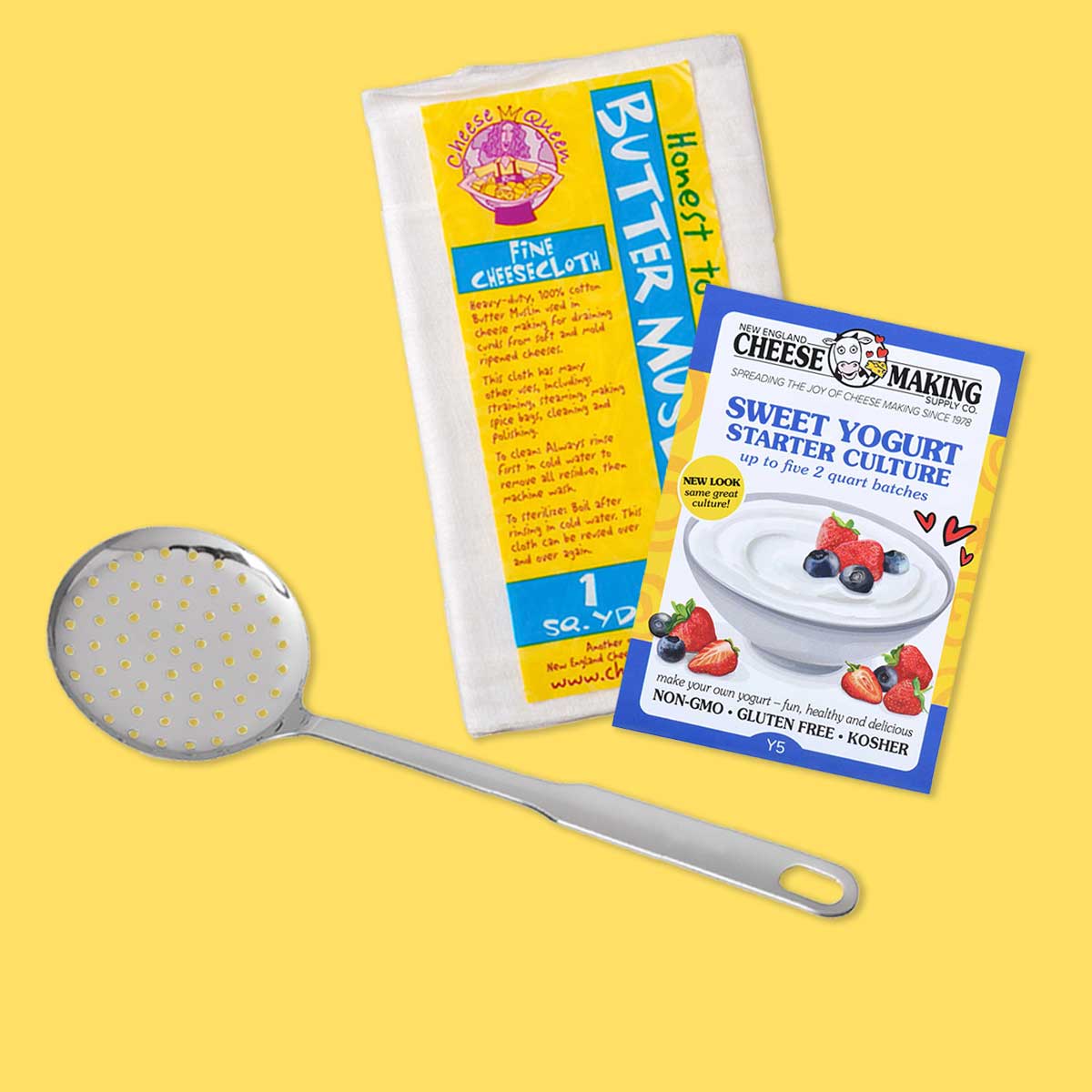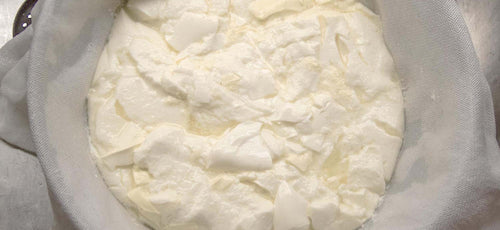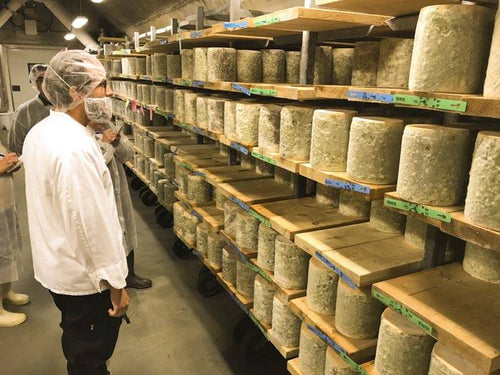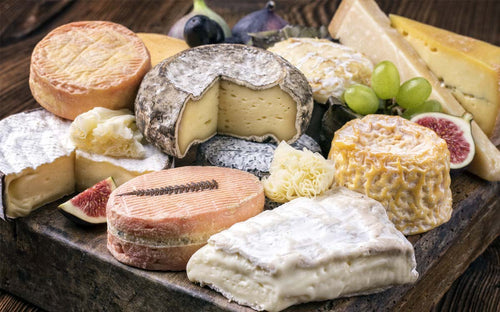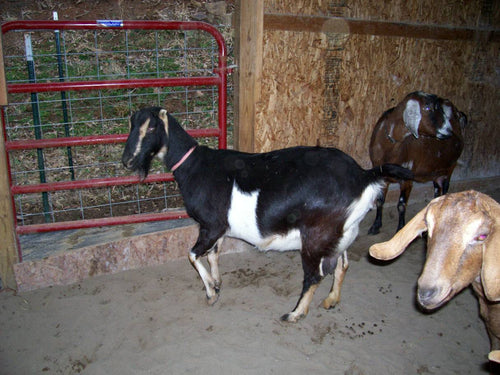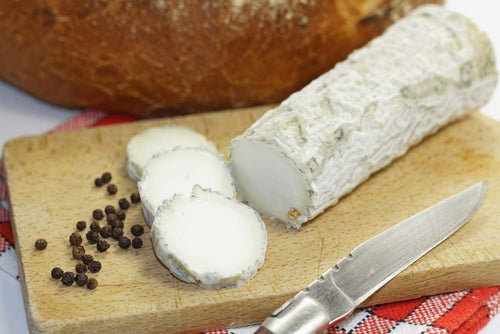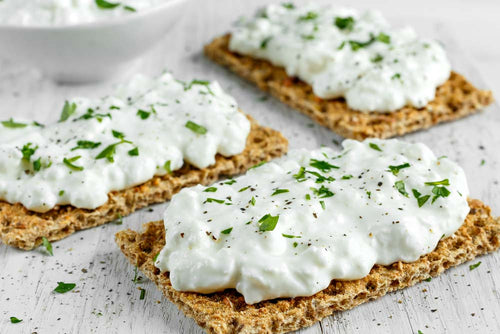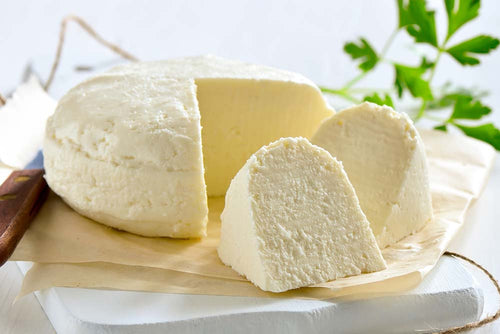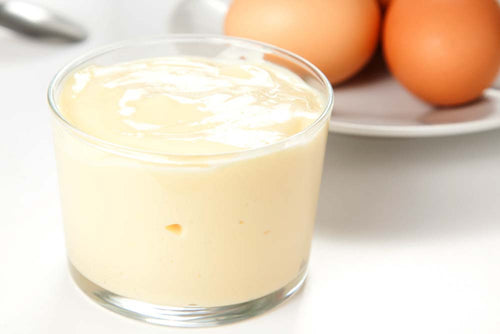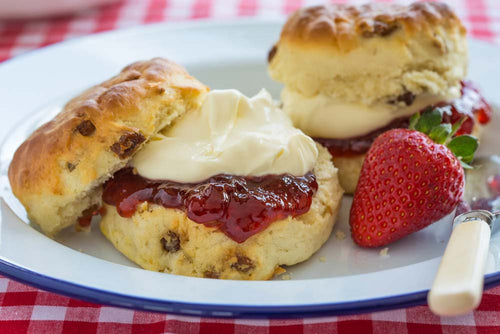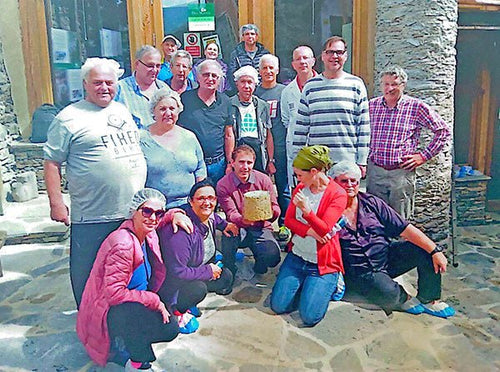Cheese Making Recipe of the Month
Tetilla from Galacia, Spain
This cheese comes from the northwest corner of Spain, where the mountains meet the sea. Surprisingly, cow's milk cheese in Spain is not common due in part to the rough mountains and dry plateaus.
On a recent trip to Spain, Tetilla cheese stood out with its freshness and unique shape of a flattened tear drop. It's a wonderful high to medium moisture cheese with a sweet buttery flavor. In this recipe, we even added our own finish with a smoked paprika and oil rub, yum.
Cheese Making Questions & Answers
Can My Cheese be Pressed Longer
Q. What is the benefit of using both a mesophilic culture and a thermophilic culture in a recipe? A lot of cheese makers, particularly the French, use them both in Camembert and blue cheese even though these cheeses are not aged for long and the curd isn't cooked.
A. In traditional raw milk cheeses, both the mesophilic and thermophilic bacteria come into the cheese from the milk itself. These can then be selected for activity by altering the process temperatures. MA4001/4002 is a good example of this, and it is often referred to as the farmhouse culture.
So, today folks add both in varying amounts. Even when temps are not ideal for some of these, they will populate and provide enzymes for even a short aging.
How to Care for Aging Blue Cheese
Q. I just made Monterey Jack cheese and it is all waxed and ready to age. I can't find anything in the instructions on how long it should age. Also, do I age it in a covered box with a wet paper towel?
A. The aging time depends on what kind of cheese you want to achieve.Some folks want to cut it in a month or so but others want to see more changes in the protein structure and flavor at 2-3 months.
Monterey Jack should be aged with higher moisture than some, but if using a closed plastic box, there should be plenty of moisture provided by the cheese. You only need to add moisture if it looks like it is drying out. Also, watch for too much moisture, which is indicated by condensation in the box, and make sure to wipe out any condensed moisture when you turn the cheese.
The Underside of Cheese is Damp While Aging
Q. I am a farmer milking two Jersey cows. I recently tried to make a quick batch of paneer with my surplus. I was following your recipe and added 1 tsp of citric acid dissolved in 16 oz of water.
The curds barely formed. I was worried, but as I had added all the acid, I decided to let it sit and be patient. Total flop. It remained the consistency of runny yogurt and never solidified.
Should I have added more acid because it was farm-fresh milk? If so, like double? Ricotta has also been frustrating to me. I find it difficult to achieve curd formation. The whey is extremely milky and the yield of cheese very low.
A. It's the high temperature and acid addition that make these cheeses.
Once the milk reaches the high temperature and the acid is added and stirred in, allow it to set still for a few minutes and watch for small flakes to form. You will likely need more acid with this milk due to the high solids of the Jersey milk, so mix double the acid. Use half of this to start, then wait a couple minutes to see if flakes form. If not, add a bit more acid and repeat. Keep repeating small additions until you see a result of flakes forming. If it works, note the % of acid solution used and use that for future batches.
One note: You mention using your "surplus" milk and if that is more than 2-3 days old or already developing its own acidity, it may be past the point of making ricotta or paneer.
Have a cheese making question, we're here for you: info@cheesemaking.com
Meet a Fellow Cheese Maker
Peter Corrigan in Princeton, New Jersey
At left, Peter Corrigan is holding his waxed "Unicorn Cheese" which he made with different colors of curds.
He actually made four separate batches of stirred curd cheddar from our book - Home Cheese Making.He then colored the curds from each batch with natural dyes, and put them all together in one, glorious cheese.
His daughter said it looked like the milk came from a unicorn, so that became it's name.
Be sure to check out the pictures of Peter's Unicorn Cheese at our fabulous blog by clicking on the button below.
News From Fellow Cheese Makers
We Go Whey Back!
My husband found your book at the town library fundraiser sale, printed in 1982! I looked you up and was happy to see you are still going strong!
Diann Kite, The Covered Wagon Country Store, Kent, CT
Response to a Q & A from Last Month
Just a couple of comments on the question about making whey ricotta in the July newsletter.
I have learned, from teaching food fermentation classes at the University of Florida, that making ricotta from cheddar cheese whey can be tricky.
1. Acidity - I agree with your response that care needs to be taken while increasing the acidity (the precipitation pH range is very narrow for the whey proteins), especially when it is added to a hot mixture. Too much acid will make these proteins more soluble and they will not precipitate.
However, depending upon how the cheese was made, the pH of cheddar cheese whey may be a little high, thus requiring judicious use of an acidulant (prior to heating).
In general, a titratable acidity of 0.3 (or pH 5.4) is recommended in Kosikowski's book (he recommends adding approximately 0.4% vinegar to cheddar cheese whey before making ricotta). I always had my students use the Pearson's Square as a simple way to calculate how much acid to add. Yes, I realize that, in the home, you may not have the titratable acidity or pH data.
2. Temperature - More importantly, in my opinion, the temperature (195-200F) being used may be too high. We have found that a temperature of 185F works a lot better for whey ricotta (and slightly lower than that for making ricotta from milk). We got a much better yield, and the curd was a bit less firm and gritty than when we tried making it at a higher temperatures.
Best of luck in your ricotta future.. I haven't made it in years (since retiring). My wife is pushing me to make a batch soon.
Ron Schmidt, Gainesville, Florida
Reply from our Technical Advisor- Jim Wallace
We must consider that this cheese was made long before the science of it all was known.
Cheddar is not so tricky if you pull the whey and heat it at the proper pH, but it does leave you a narrower window before it becomes too acidic.
The whey is still warm and the culture is still steaming along in it's growth phase, so, pretty soon it's into the low/no yield territory due to its acid development.
Parma, any of the Alpine, or traditional basket cheeses such as my Pepato Toscano recipe guideline would be ideal because their pH is just above 6.0 when pulled.
This gives you the choice of making a much richer, sweet ricotta with a lower yield at about 5.9-6.0 (I use this for dessert with toasted pine nuts and honey.) Or, a bit drier and less sweet ricotta (but with a higher yield) when taking it down to the 5.5-5.8 range. This is great for fillings and baking.
When working In Parma, Sicily, and in the Alps, I see them send a very sweet whey to the cooker as soon as they pull the curds at about pH 6.0 or slightly above with no acid addition.
Here, I do not focus too much on the measurement tools, but teach folks to use their taste. 5.4 is just about where the whey is neutral - neither sweet nor tangy. So, good whey for ricotta can be as low as just being able to taste the last sweetness in the whey.
At my workshops and in my guidelines, I recommend 185F but it's not terrible if they go a bit higher. However, by 195F they are cooking the flocs as they form (=dry and granular).
Please send your cheese making news & photos to: moosletter@cheesemaking.com




